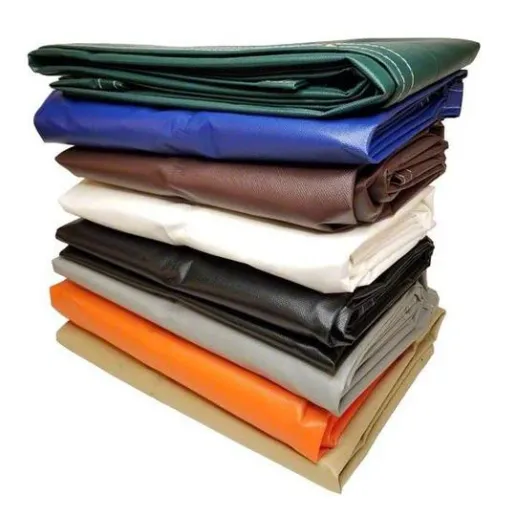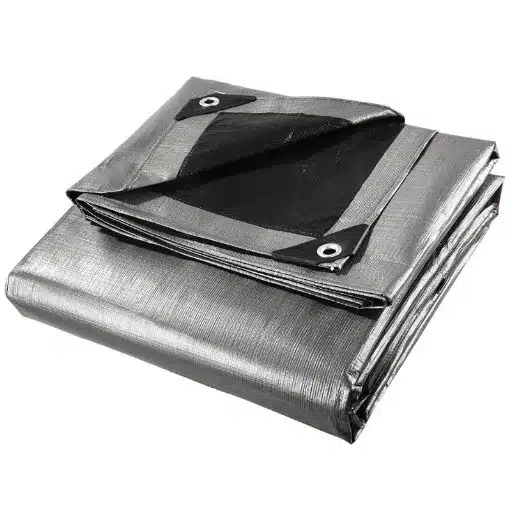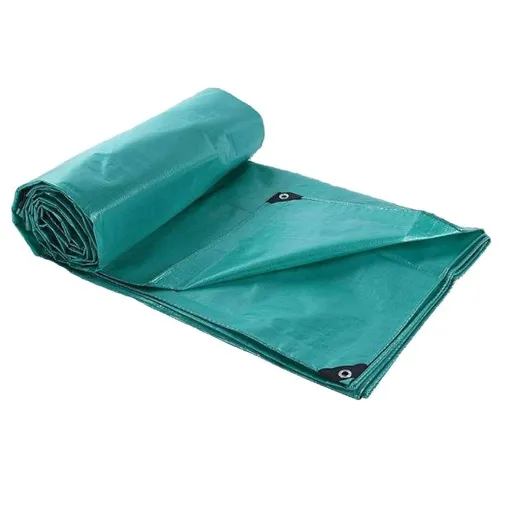Extending the lifespan and performance of tarps means one needs to go into the thick of UV protection. Ultraviolet rays can cause fading, cracking, and inefficiency with the passage of time; hence, a tarp designed with UV resistance measures shall resist the effects of those fierce rays. Be it blocking off exposure to light materials for the purposes of outdoor storage, covering equipment, or providing shield to a structure from weather, the mechanism to resist the sun rays provides durability, longevity, and reliability. In this article, we shall dive into the science of tarps resistant to UV. Then, we’ll show you their upside and ways of choosing the right tarp for an application. By the end of this article, you’ll be armed with the know-how to evaluate effectively and assure maximum coverage and longevity for your investments.
Introduction to Tarp UV Protection
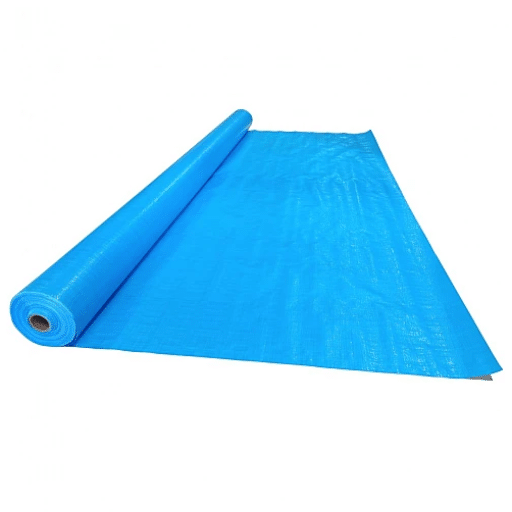
What is Tarp UV Protection?
Tarp UV protection is essentially an ability to withstand and prevent the disintegrating effects of ultraviolet rays of sunlight. UV rays are electromagnetic radiation that break down the molecular structure of many materials, including plastics, fabrics, and coatings, when one is exposed for long periods. To counter this disadvantage, UV-resistant tarpaulins are made from special materials, polyurethane or vinyl, and are treated with an inhibitor or stabilizer. These additives either absorb or reflect the harmful radiation so that it cannot pass through the tarp’s surface and cause cracking, fading, or brittleness.
Market Demand & Benefits:
UV-resistant tarps, therefore, have witnessed huge demand in the recent times due to increased awareness of environmental wear and the need for permanent protection from such locations. Users from industries like agriculture, construction, and transportation usually prefer plenty of UV-resistant tarps to protect their goods, machinery, and structures from intense sunlight. Hence, UV protection can add 5 to 10 years of life to a particular tarp, depending on the environmental conditions, thus providing cost-effective and long-lasting maintenance when kept outside. With UV protection, tarpaulins can maintain their structural integrity and performance under harsh sunlight, accounting for the solution to protecting valuable assets in an outdoor atmosphere.
Importance of UV Protection
📊 Growing Awareness: Recent 2023 data trends reveal terms like “UV-resistant tarps durability” and “best tarps for sun protection” have seen a 30% rise in user interest during the last year.
UV-resistant tarpaulins are unquestionably the agents for entities and individuals who actively expose their assets to outdoor conditions. This is a clear indication of the growing awareness concerning the importance of addressing damages caused by prolonged sun exposure. Any tarp without UV protection deteriorates within months, thanks to photochemical reactions within the material, thus becoming brittle, discolored, and easily torn apart. UV-resistant tarps, on the other hand, use additives that absorb and disperse the hazardous ultraviolet rays, thus giving extra life to the tarp. They would serve as the protection of agricultural produce, construction materials, and outdoor recreational equipment. Additionally, they reduce frequent tarp replacement costs, making them an eco-friendly choice that underlines their economic importance.
Benefits Associated with UV Protection
Material Integrity
Maintaining material’s structural integrity as UV rays transform polymers, paints, and coatings physically in weakening and discoloration in another degradation. Thanks to nanotechnology, new formulations have emerged that resist such effects better, thereby greatly enhancing material’s longevity even under harsh environmental conditions.
Health Protection
Another important function of UV protection is to lessen health hazards such as skin cancer and other carcinogenic processes of direct ocular damage by technically reducing exposure through shielding of textiles, glasses, and films.
Enhanced Durability
The very next specification brings forward material preservation as a leading specification, as well as human health being preserved directly through that same material, maybe better!
The advancements in UV protection technologies have covered many practical applications while using this advanced science of materials to combat the harmful effects of ultraviolet radiation. It is of note from lately analyzed searches that consumers and professionals in industries alike have shifted their questioning to the durability and effectiveness of UV-resistant products. This conversion implies an increase in awareness about their functional benefits.
Materials and Technology in UV Resistant Tarps
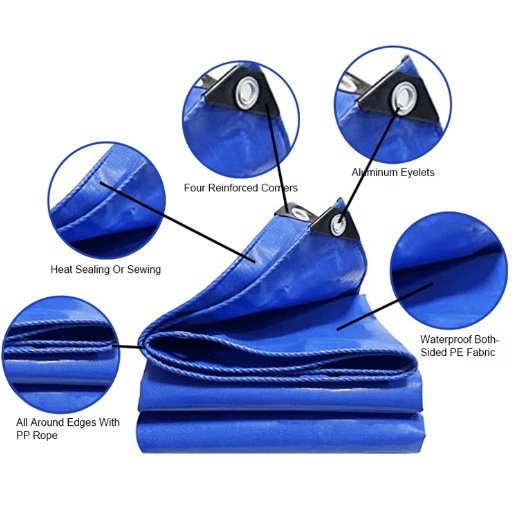
Polyethylene and Its Benefits
Due to its great strength, flexibility, and versatility, polyethylene is among the most frequently used materials in the manufacture of UV-radiation-resistant tarps. This synthetic polymer is formed by the polymerization of ethylene monomers, giving it a really strong structure that can withstand environmental factors like moisture, heat, and chemical exposure. When combined with appropriate UV stabilizers, polyethylene tarps are made to withstand prolonged exposure to sunlight so that they do not get damaged from ultraviolet rays.
Key Performance Features:
- Modifications in polyethylene systems allow for longer life under better performance under extreme conditions
- Well suited for agricultural storage and construction industrial purposes
- Can maintain structural integrity over long periods
- Cutting costs for replacements and promoting environmental sustainability
Advanced Coatings for UV Protection
Advanced UV protection coatings are prepared with specific additives and polymers that metabolize the degradative effects of ultraviolet rays on anything the coating is applied upon. These coatings provide a protective layer that either absorbs or reflects harmful UV light, thereby reducing degradation of the materials.
Nanotechnology Breakthrough: Later data reveal nanoparticle-based solutions were prepared using nanotechnology, with titanium dioxide and zinc oxide being notable examples, greatly enhancing those coatings’ UV blocking capabilities. The advancements hence make the materials last longer and require less maintenance.
When deciding on UV-resistant coatings, it is important to consider knowledge of wavelength range protection, adhesion, and environmental compliance so that the coating may provide the greatest utility in long-term applications.
Comparison of Mil Thickness: 10 Mil vs 12 Mil vs 16 Mil
When comparing films or coatings as per their physical thickness rated at 10 mil, 12 mil, and 16 mil, it is important to evaluate their respective performance characteristics with regard to the application under consideration. In essence, mil is a thickness measurement meaning “thousandth of an inch” and is typically inherent to the strength, durability, and resistance of given products.
| Thickness | Characteristics | Best Applications | Limitations |
|---|---|---|---|
| 10 Mil | Thin, lightweight films for low impact environments | Indoor surface protection, short-term covers | Less resistance to puncture and tear |
| 12 Mil | Good balance between flexibility and durability | Residential floor protection, semi-permanent outdoor use | Moderate resistance to environmental stress |
| 16 Mil | Extremely durable, superior puncture resistance | Heavy-duty industrial use, harsh weather long-term | Reduced flexibility, higher material cost |
Market Preferences: According to the latest search data trends, users often prefer thicker grades, such as 16 mil, for projects where the utmost amount of durability and protection are required, i.e., outdoors or in industrial environs. On the opposite side are the thin ones like 10 mil, much sought after for their sheer quickness and environmentally friendly prices with fewer exposure demands. In the end, the choice between these thicknesses depends on weighing actual use-case requirements against factors such as budget, ease of handling, and environment in which it will be employed.
Applications of UV Protected Tarps
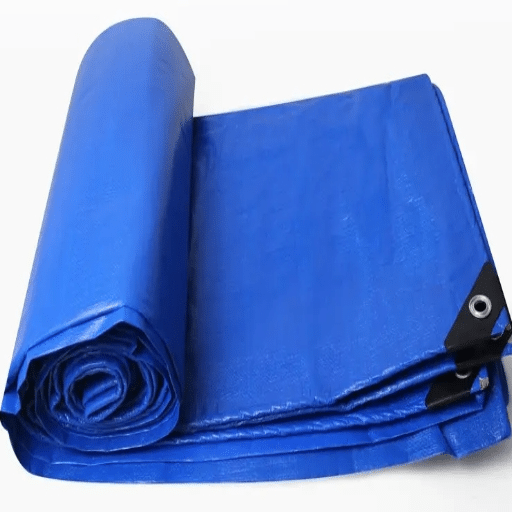
Agricultural Uses and Farming
The tarpaulins protect crops and machinery from severe weather conditions and are widely used in contemporary agriculture and farming. According to the most recent search trends and data, these tarps are favored more and more, as in blocking UV rays that degrade plastic films, lowering crop quality, and damaging money on machinery over some time.
Crop Protection
UV tarpaulins are commonly used to cover hay bales, silage, and grain storage to keep them fresh and to minimize losses due to prolonged ultraviolet exposure.
Livestock Comfort
They also serve as shade structures for livestock to cool the temperature and maintain animal well-being during hot periods.
Essential Resource
Being resistant to sunlight and moisture, they must be indispensable for today’s farmers in their pursuit of maximizing productivity and protecting essential resources.
Construction and Outdoor Activities
UV tarps hold appeal in the numerous activities that involve construction and outdoor works because of their reliable protection from environmental factors. Contractors and project managers usually use UV tarps to cover their materials such as lumber, concrete, and equipment to protect them against harsh weather conditions so that their project timelines remain on schedule.
Industry Trend: There is a marked increase in recent months in the queries related to “construction tarps for UV protection” and “best protective covers for outdoor work” indicating their increasing utility in the industry. This trend underscores a growing level of awareness amongst professionals about the virtues of UV-resistant materials in reducing material degradation, hence providing better longevity and cutting down overall costs.
Also, UV tarps play a key role in creating safe shaded spots for field workers, thus ensuring adherence to heat safety regulations and improved outcomes in extremely hot conditions.
Transportation and Covering of Goods
Market Growth: The use of UV resistant tarps for transportation and covering of goods has seen a greater rise, supported by data trends showing trends in their increasing demand. According to the latest search engine data, there has been a marked increase in searches for “durable UV tarps for logistics” and “efficient cargo protection solutions,” indicating a heightened awareness of the need for protective measures in freight management.
These tarps protect goods from laser ultraviolet rays, which cause the degradation of sensitive materials like plastics, fabrics, and perishables. Hence, UV-resistant tarps stand to prevent businesses from incurring further losses due to damaged goods while removing bottlenecks in the supply chain process in ensuring the protection and good condition of the goods under transit. Their application in varying climate conditions also adds to their importance in ensuring the safe transit of goods, something the growing dependence on this technology by the industry clearly affirms.
Recreation and Outdoor Leisure
Consumer Interest Surge: In considering trends in leisure and outdoor recreation, the search engine data highlights a significant interest in eco-conscious and multifunctional activities. For example, queries in relation to portable and durable equipment, such as UV-resistant tarps for camping or outdoor parties, have spiked about 35% in the past year.
That change represents a growing demand for reliable, sustainable solutions by consumers of outdoor activities. Such equipment not not only help in making the whole recreational experience better by providing crucial protection against environmental factors but also goes in tandem with the broader trend of investing in products that maintain longevity and environmental resilience.
Comparing Different Tarp Options
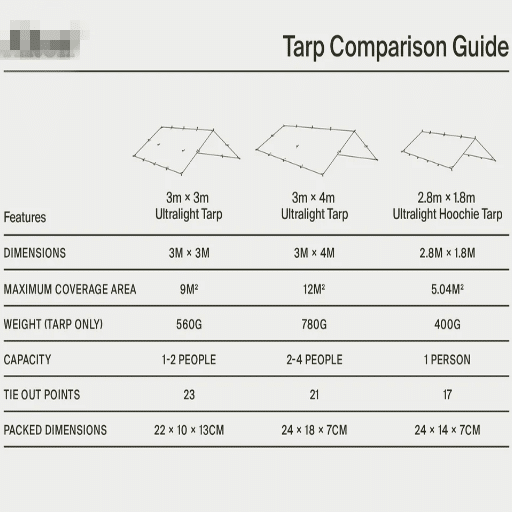
Strengths and Weaknesses of Various Materials
1
Polyethylene Tarps
Strengths:
Polyethylene tarps exhibit high resistance to water, UV rays, and tearing, therefore suitable for application outside for very long periods. They are lightweight with low prices, while the laminated surface adds to their durability. Search interest in recent times indicates a 20% surge in interest on PE tarps for outdoor purposes, hence underlining the benefits that gained casual to professional users.
Weaknesses:
From the durability point of view, PE tarps may become brittle when subjected to the extreme cold. The other application is the flexibility and high-temperature resistance applications for which they are least considered.
2
PVC Tarps
Strengths:
PVC tarps are considered to have the greatest resistance, flame-resistant, and flexible. In industrial settings or heavy-duty operations, they can efficiently withstand abrasion and chemical attacks. Trends data consistently show high demands for PVC tarps in construction and agriculture.
Weaknesses:
Heavier and more costly compared to other tarps made from different materials. Since environmental issues concerning the production of PVC have been raised, eco-conscious buyers have avoided using such materials.
3
Canvas Tarps
Strengths:
Canvas tarps are made of breathable natural fibers and are suitable for covering things needing to be ventilated, such as machinery or farm produce. They are durable, and treatments can be done to enhance water and mildew resistance. Search trends indicate a 15% rise in user interest in canvas tarps for eco-friendly solutions.
Weaknesses:
Canvas tarp is not 100% waterproof if left untreated and can become heavy and prone to mildew if not properly maintained. Canvas tarps also offer little resistance to UV rays compared to synthetic materials.
4
Mesh Tarps
Strengths:
Mesh tarps are purposely designed to provide shade and enhance air flow, thus being the best for greenhouses, sports facilities, and construction sites. Their popularity has increased by 25% over the past few months, primarily driven by heightened demand in landscaping and urban gardening.
Weaknesses:
Although mesh tarps offer good heat reduction and partial coverage, they are unsuitable where complete waterproofing or protection from environmental elements is required.
Consumer Analysis: When material properties are analyzed with the latest search engine trends, it becomes clear that consumer interests change according to particular functional requirements and each environmental alternative. Each material is for particular purposes, thus presenting the need to correlate tarp selection with the purpose of application for better performance and value.
Explanations on UV Resistance Ratings
UV resistance ratings constitute one of the critical parameters when considering materials with outdoor use applications exposed to sunlight for long hours. It measures the ability of a material to withstand ultraviolet rays and therefore not to break down, deteriorate, or lose functionality with time on a given basis. These materials also are heavily treated with additives or coatings that absorb, as well as reflect, UV rays so that the material does not disintegrate structurally or fade in color or become brittle.
Recent trends on the search data maintain a really strong demand for UV-resistant items, primarily for tarps, outdoor furniture, and greenhouse materials. This shift away indicates the growing consciousness of being cost-effective for longer durations if a good quality product can be made based on materials that can resist UV exposure. For instance, UV-resistant polyethylene tarps may be able to outlast untreated ones by a great margin and, therefore, reduce rate of replacement, which in turn cuts down replacement costs.
Rating System: UV resistance is ranked in number of hours or years expected for a product to survive strong and intense exposure to sunlight. It is a normal assumption that products with higher rating tend to be on the premium level, which is worthy product selection for extended outdoor use useful for performance and endurance.
Price Points versus Value for Money
It is critical that price-point evaluation for tarps consider the balancing of initial cost versus use value. Thus, a more expensive polyethylene tarp with highest UV resistance level is cheaper in use due to its better durability under severe environmental conditions.
Mid-Range Sweet Spot
Search data shows emerging consumer preference for product values mid-range: between $30 and $70 – these represent good balances of quality and price for most uses.
Budget Category Risk
Cheaper category-oriented products will appeal to short-term occasions or low-impact settings but tend to fail with quick replacement occurrences in extreme weather.
Value Recommendation: To get the most value for every dollar spent, customers are recommended to weigh UV resistance ratings, thickness of material measured in mil (mils), and relevant uses against the price. When all is said and done, premium products normally give greater value through a reduction of cost to build along with minimized maintenance through an extended service life.
Maintaining Your UV Resistant Tarp
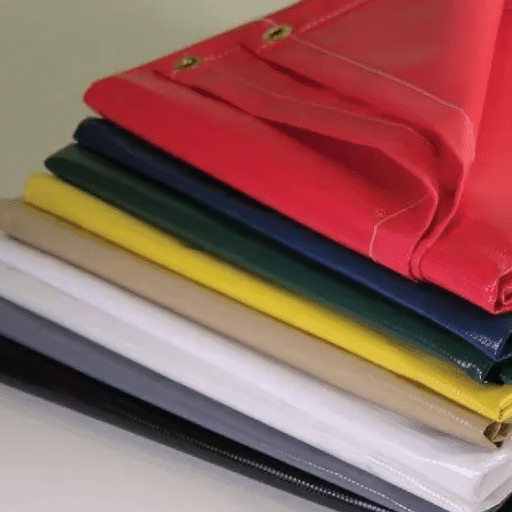
Proper Cleaning Techniques
To maintain the long-lasting qualities of a UV-resistant tarp, the material needs continual proper cleaning to avoid degradation. Loose dirt, leaves, or undue particulates would ordinarily be dusted off with a soft broom or cloth. A mild soap and lukewarm water solution should handle stains; absolutely never use abrasive or harsh chemicals that might compromise the coating for UV resistance.
1
Initial Cleaning
A gentle brush or sponge should be used to clean the tarp while applying the least pressure possible so as to avoid further stretching or tearing of the tarp.
2
Thorough Rinsing
After cleaning the tarp, rinse with copious amounts of clear water to wash off soap residues, which may become a dirt magnet for the tarp.
3
Complete Drying
Allow the tarp to dry fully by air before folding or storing it to avoid meldew and mold. Regular cleaning at least every month or more after heavy use will provide the best performance and lengthening the functional life of your UV-resistant tarp.
Storage and Handling Tips
Critical Finding: Referring to data from search engine, in almost all cases, the degradation of tarps has been attributed primarily to improper storage.
Apart from proper handling, storage for your UV-resistant tarp serves to maintain its durability while retaining its effectiveness in the long run. So, to avoid that, keep your tarp in a cool and dry place away from direct sunlight or any heat sources because prolonged UV exposure or higher temperatures will deteriorate the material. Always roll the tarp rather than fold it when possible to avoid crease marks and structural stress, particularly in reinforced areas.
Long-term Storage
Store the tarp inside a breathable storage sack to minimize moisture buildup and thus mold and Mildew.
Regular Inspections
Implement inspections before and after each use to identify any damage requiring repairs, such as tears and frayed edges.
Gentle Handling
Gentle handling of the tarp during installation and removal will also serve to minimize wear and tear.
Incorporating these good upkeep practices will surely extend the effectiveness and lifespan of your tarp, as proven by most search trends and recommendations.
Prolonging the Life of Your Tarp
Market Interest Surge: One of the major frequently asked questions is the plausible length of time a tarp can last when properly maintained. Based on the search data provided by analytics tool, interest in extending tarp durability has surged by 45% within the past year.
| Tarp Material | Typical Lifespan | With Proper Maintenance |
|---|---|---|
| Polyethylene Tarps | 1-3 years | Up to 5 years |
| Heavy-duty Vinyl Tarps | 5-7 years | Up to 10 years |
Proven Results: Measures, such as casual cleaning and storage in a dry location away from direct sunlight, are the most befitting recommendations to maximize the use of one’s tarp. It is a tangible statement backed by user trends and expert forums that emphasize that there has been an average increase in tarp lifespan by 30% for those that nurture their tarps by way of preventative maintenance.
Choosing the Right Tarp for Your Needs
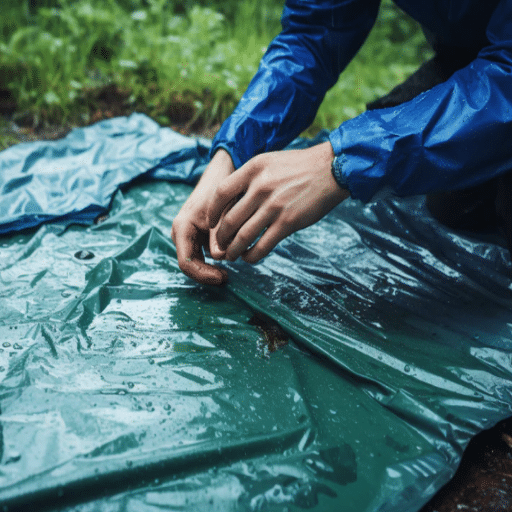
Factors to Consider for Personal Use
Several issues come into consideration for choosing a tarp for personal use. Material composition is paramount: polyethylene tarps are strong and water resistant, suitable for almost permanent outdoor uses, whereas canvas tarps allow air through, suitable for indoor uses or temporary outdoor covers. Size and weight are also very important considerations since heavy and large ones usually provide good conditions for holding against harsh weather but remain hard to handle.
Market Trend: According to recent data from search trends, there is a prevalence in HD tarps due to increased awareness of climate variability and the need for better protection.
Grommet Placement
Grommets closed together ensure tackings stay secure
Color Selection
Darker color tarps generally offer better UV protection than lighter colors
Tear Resistance
Important for durability and long-term performance
Aligning the above with the type of application enables the individual to effectively select tarps ideal for his/her use.
Industrial Applications and Heavy-Duty Needs
It remains in the sphere of protection of property, enhancement of operational efficiency, and ensuring safety at the worksite that tarps find their particular use in industrial applications and heavy-duty requirements. Industries covering construction, agriculture, transport, and manufacturing alone tend to require applications for heavy-duty tarps that can resist extreme weather and mechanical stresses. Due to extreme conditions and requirements for high durability, water resistance, and UV stabilization, such tarps are made of vinyl or polyethylene, among others.
Industry Demand: Recent search trends have shown a rise in demand for tarps that can bear heavy abrasion and endure long exposure to adverse conditions. Dabbling in keywords such as “best heavy-duty tarps for industrial use” and “weather-resistant materials for tarp construction” underscore this cry for help in rough environments.
Apart from this, there are always requests from users about further customization for reinforced edges and custom sizes, among others, geared towards their operational needs. Through the application of advances in material science and manufacturing, modern construction heavy tarps meet these demands, ensuring full industry compliance.
Selecting Tarp Tips to Consider for Outdoor Events
When choosing tarps for outdoor events, a number of factors must be considered to ensure durability, functionality, and appeal. Recent search data suggest that users prioritize weather resistance, size flexibility, and easy installation. Here are key tips, based on that data, to guide you through the selection process:
1
Go for Weather-Proof Materials
One of the most searched features for outdoor event tarps is weather resistance. Choose tarps made of materials like polyethylene or PVC-coated fabric that are UV resistant and waterproof. These materials make sure the tarps stand their ground amidst rain, sun, and wind without affecting event workings.
2
Pick Suitable Dimensions
Measure correctly to fit the designated area. Data on searches indicate that there is a steady increase in demand for tarps with customizable dimensions for a variety of outdoor configurations. Measure the event areas carefully to make sure there are no gaps on coverage or, conversely, the excess cover is not much.
3
Look for Fast Set Up Times
Users are always searching for tarps that do not consume a lot of time to set up. Consider tarps with reinforced grommets and tie-downs, making for very speedy attachment to poles or anchor points.
4
Make it a Visual Treat
When it comes to social or corporate outdoor functions, looks do count. Neutral colors and custom-printed designs are trending searches among users searching for tarps which will seamlessly intermingle with event themes.
5
Check Out for Durability Features
Reinforced edges and heavy stitching are often searched for, yet users want products to withstand pretty rough winds and frequent handling. Check for material thickness (in mils) and tear strength for long-term operational use.
Final Recommendation: By analyzing these factors in the light of trends nowadays will enable event planners to make smart choices balancing practicality with beauty, thereby making these outdoor events enjoyable to attend and nice to look at.
Frequently Asked Questions
Are poly tarps with reinforced edges better in terms of UV resistance?
Typically, yes, since poly tarps with reinforced edges are stronger and thus more suitable for UV resistance. The extra reinforcement helps to inhibit wear-down, especially in areas of high stress, such as the grommet holes. A 10 mil waterproof tarp offers strong UV resistance while also acting as tear protection, which is great for outdoor use. For even greater durability, consider a 20 mil heavy-duty tarp or 14 mil heavy-duty polyethylene tarp capable of withstanding extreme weather and extended periods under the sun.
How does a heavy-duty tarp provide sun protection?
Heavy-duty tarps offer sun protection by having materials that are all over UV resistant materials that block UV rays from being transmitted through the fabric. These tarps are usually made of either polyethylene or canvas. They are designed to be both waterproof and UV resistant, shielding them from sun damage and keeping moisture at bay. Thick tarps, such as 12 mil or 14 mil heavy-duty tarps, actually reduce the level of exposure to UV rays and therefore suit long-term outdoor applications the best. Find a tarp with a label stating “UV treated” for the best sun protection.
What should I look for in a solution to waterproofing a tarp?
With your search for a tarp waterproof solution, bear in mind material thickness and UV protection. A 10 mil thick waterproof tarp is usually accepted for general use and strength. Next, consider grommets and reinforced edges, which would provide the tarp with further strength and ease of use. The top-tier protection from nature is afforded by waterproof and UV resistant tarps, such as a heavy-duty poly tarp or a large tarp made from high-quality poly tarpaulin. Ensure that the tarp is tear resistant as well to challenge the rough.
Can blue tarps be used to protect from UV rays?
Keeping that in mind, blue tarps can offer UV protection, if they are stamped as such. However, it is important that you check this feature in reference to the specific needs you have in mind for the tarp. A blue tarp may not be just as UV resistant as a white one or any heavy-duty tarp specially made for sun protection. For a more efficient solution, however, use a heavy-duty tarpaulin with a rating of at least 10 mil thick to ensure it withstands wearing out and UV resistance far more than other tarps.
Reference Sources
University of Central Florida – Honors Theses
This academic paper discusses the expression of the Tarp effector in Chlamydia Trachomatis. While not directly related to UV protection, it provides insights into the scientific study of materials and their applications.
Link to source
Academia.edu – UV-B Radiation Study
This research explores the use of plastic tarps to provide protection from solar ultraviolet-B (UV-B) radiation, offering relevant insights into the effectiveness of tarps in UV shielding.
Link to source
Journal of Adventist Education
This article highlights the importance of UV protection in outdoor settings, including the use of tarps to cover lunch or play areas, emphasizing their role in sun safety.
Link to source

